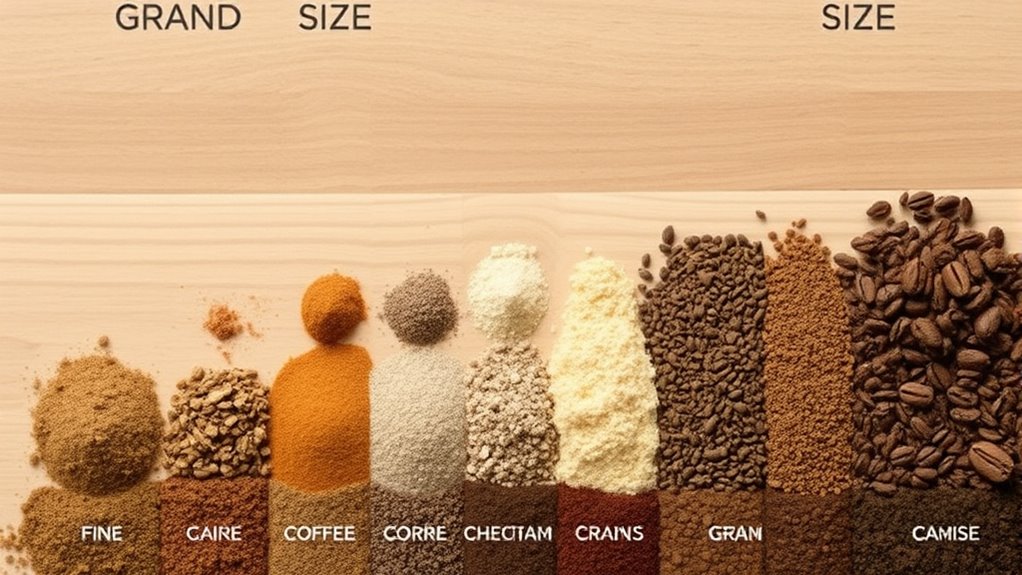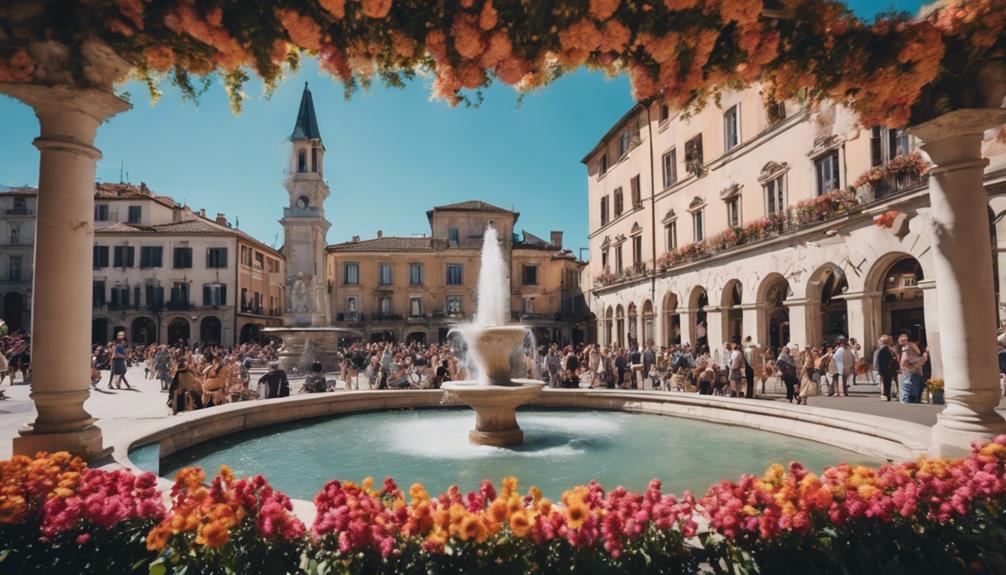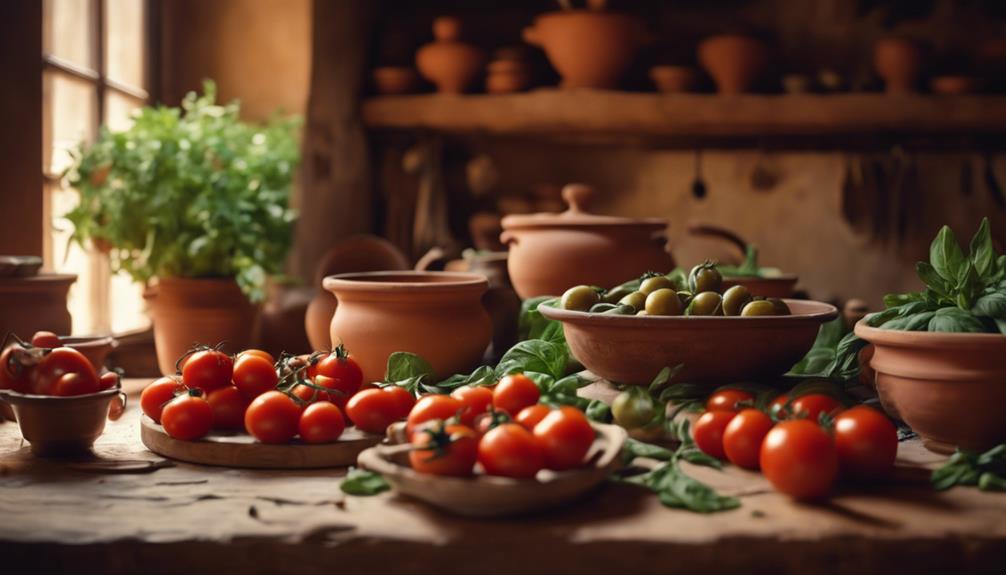Choosing the right grind size is key to getting the best flavor from your coffee, tea, or kitchen crafts. Coarse grinds work best for French press and cold brew, while fine grinds suit espresso and AeroPress. Inconsistent grind sizes can lead to weak, sour, or bitter results. Adjusting your grind based on taste preferences and brewing method helps improve clarity and strength. Keep exploring to discover detailed tips that will elevate your brewing game.
Key Takeaways
- Different brewing methods require specific grind sizes, from coarse for French press to fine for espresso.
- Uniform grind size is essential for even extraction and optimal flavor.
- Adjust grind size based on taste issues: finer for sourness, coarser for bitterness.
- Store beans properly and clean grinders regularly to maintain consistent grind quality.
- Technological advances help achieve precise, consistent grind sizes for better brewing results.
Understanding Grind Sizes: From Coarse to Fine
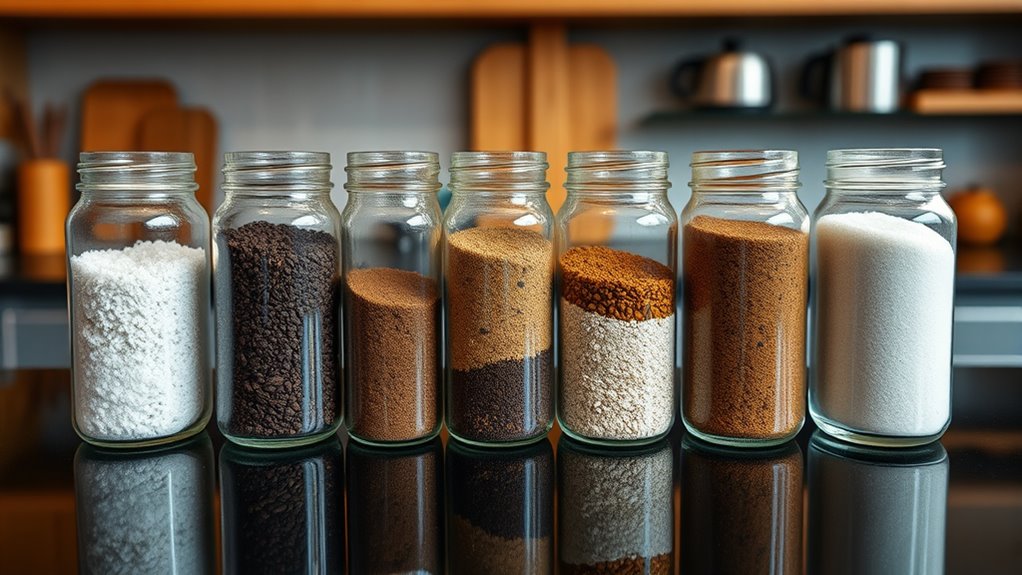
Understanding grind sizes is essential because the right grind directly affects the flavor and strength of your brew. For example, a French press requires a coarse grind to prevent over-extraction and produce a rich, full-bodied taste. Conversely, an espresso grind is very fine, almost powdery, to allow quick extraction under high pressure. If you use too fine a grind in a French press, your coffee may become bitter and sludge-like; too coarse, and it’ll taste weak and under-extracted. Knowing these differences helps you match your grind to your brewing method. Coarser grinds are usually better for methods like French press or cold brew, while finer grinds suit espresso or Aeropress. Mastering these distinctions lets you optimize flavor and achieve the perfect cup every time. Additionally, understanding grind size consistency ensures uniform extraction and better flavor profiles in your brew.
Match Your Brew Method to the Perfect Grind Size
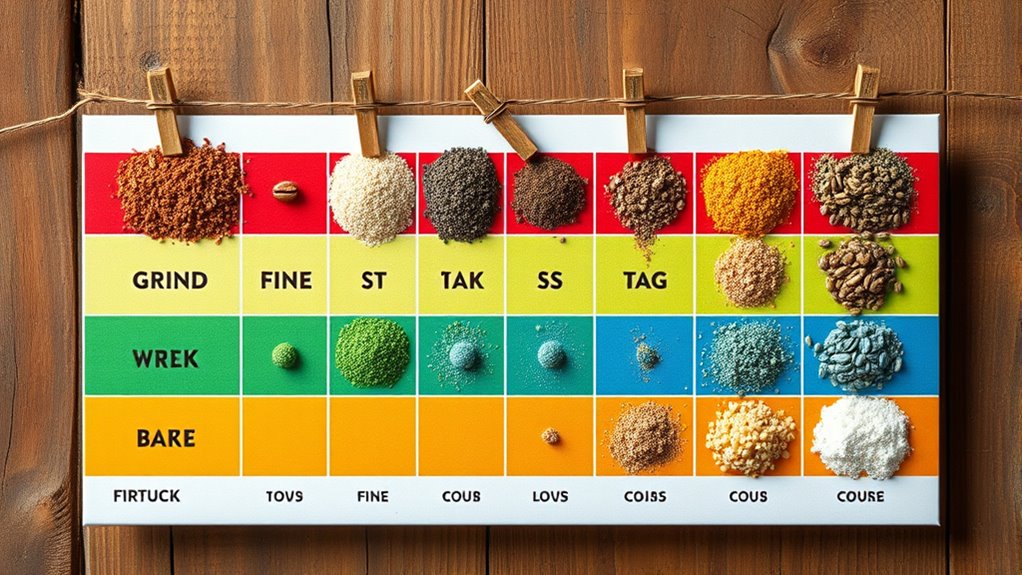
Choosing the right grind size for your brewing method makes all the difference in your coffee’s flavor and strength. For methods like pour-over or French press, a coarser grind allows water to extract flavors evenly while preventing over-extraction. Espresso requires a very fine grind for proper pressure and bloom techniques, which help release trapped gases and improve flavor. Consistent grind size is key to avoiding uneven extraction, so aim for uniformity to enhance your brew. When matching your grind to your method, consider how bloom techniques influence extraction—using a finer grind can improve blooming in pour-over or AeroPress. Additionally, advancements in automation technologies are making precise grind adjustments easier, leading to more consistent results. Ultimately, selecting the correct grind size guarantees *ideal* flavor, clarity, and strength, making your brewing process more predictable and enjoyable.
Tips for Adjusting and Troubleshooting Your Grind for Optimal Flavor
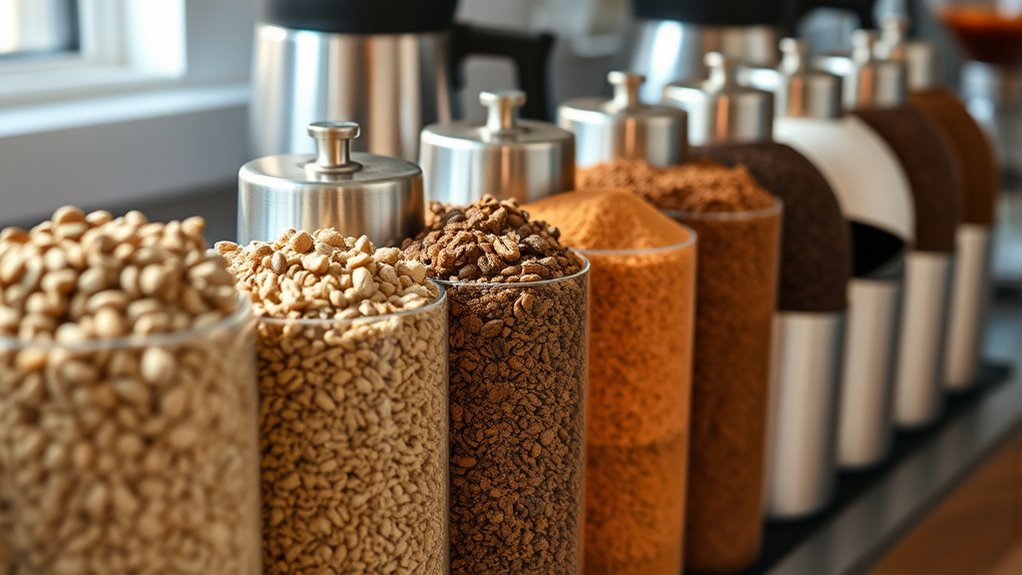
If your coffee tastes weak, sour, or overly bitter, adjusting your grind size can often resolve these issues. First, verify your grind consistency is uniform; inconsistent particles can cause uneven extraction. When troubleshooting, try finer grinds if your brew is weak or sour, and coarser if it’s bitter or over-extracted. Proper storage tips—like keeping beans in an airtight container away from light and moisture—help maintain freshness, which affects grind quality. Use this guide to understand the relationship between grind size and flavor:
| Issue | Adjustment | Result |
|---|---|---|
| Weak, sour taste | Finer grind | Faster extraction, richer flavor |
| Overly bitter | Coarser grind | Slower extraction, milder taste |
| Inconsistent grind | Use proper storage | Maintains grind quality |
| Unusual flavor | Clean grinder regularly | Prevents contamination and clumps |
Additionally, selecting the appropriate filtration technology can impact flavor extraction and overall brew quality.
Frequently Asked Questions
How Does Grind Size Affect Extraction Time in Brewing?
You’ll find that particle size directly impacts extraction time in brewing. Finer grinds increase the surface area, boosting the extraction rate and making your brew more intense quickly. Conversely, coarser particles slow down extraction, resulting in a lighter flavor and longer brew time. Adjusting grind size lets you control how fast or slow the extraction occurs, helping you fine-tune your perfect cup every time.
Can I Use the Same Grind Size for Multiple Brew Methods?
Using the same grind size for multiple brew methods is like trying to fit one key into every lock—it often doesn’t work well. Grind size versatility is limited because each brewing method needs a specific grind for ideal extraction. For true multi-method brewing, you’ll want to adjust your grind size depending on the method, ensuring you get the best flavor and extraction every time.
If your coffee tastes overly bitter or sour, you’re likely experiencing over- or under-extraction related to grind size. A bitter taste signals over-extraction, often from too fine a grind, while sourness indicates under-extraction from too coarse a grind. You’ll notice taste imbalance and brewing inconsistencies, making your brew less enjoyable. Adjust your grind size accordingly to find a balanced extraction, ensuring consistent, flavorful coffee every time.
How Do Ambient Humidity and Temperature Influence Grind Consistency?
Ambient humidity impact and temperature effects can considerably influence your grind consistency. When humidity rises, your coffee beans absorb moisture, causing the grind to clump or become uneven, making it harder to get a uniform size. Conversely, low humidity helps keep beans dry, ensuring a more consistent grind. Temperature fluctuations can also affect grinder performance and bean stability, so maintaining a stable environment helps you achieve ideal grind consistency every time.
Is There a Universal Grind Size for All Types of Coffee Beans?
Think of coffee beans like different musical instruments—each needs its own tune. There’s no single universal grind size because coffee bean varieties vary in density and oil content. Your grind size calibration must adapt to these differences, ensuring ideal extraction. You adjust like a maestro tuning their instrument, catering to each bean’s unique character. So, instead of a one-size-fits-all, treat each bean with its own perfect grind.
Conclusion
Now that you know how different grind sizes impact your brew, you’ll be able to perfect your coffee, tea, and kitchen craft with confidence. Did you know that a study found that adjusting grind size can improve extraction efficiency by up to 30%? So, don’t hesitate to experiment and find what works best for your taste. With a little practice, you’ll brew richer, more balanced drinks every time. Happy brewing!
